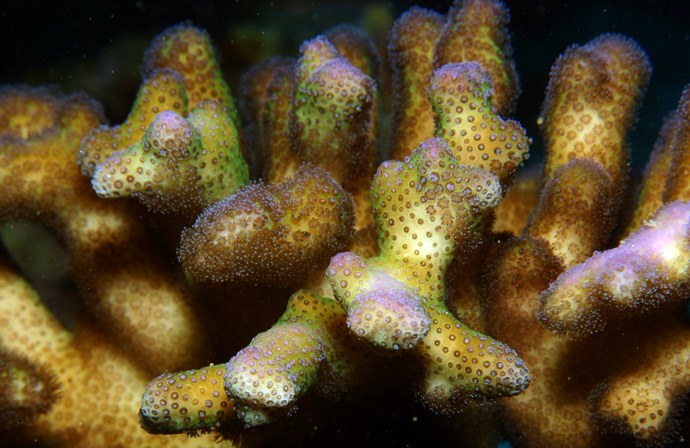According to the research paper published February 4, 2015 in Marine Biology:
Experimental feeding trials revealed that corals mistake microplastics for prey and can consume up to ~50 μg plastic cm−2 h−1, rates similar to their consumption of plankton and Artemia nauplii in experimental feeding assays. Ingested microplastics were found wrapped in mesenterial tissue within the coral gut cavity, suggesting that ingestion of high concentrations of microplastic debris could potentially impair the health of corals.
Scientists are not clear yet about the long term effect of microplastic ingestion. Corals have evolved to deal with natural participates like detritus and even metals (to an extent), but are corals able to process or expel plastic from their guts? That’s the $64,000 question.
We are learning that corals are voracious eaters. Advanced Aquarist has published many articles about coral nutrition in the last couple of years, including:
- Wijgerde, T. Coral Feeding: An Overview (2013)
- Riddle, D. Coral Nutrition, Part Two: Foods for Corals (2015)
- Wijgerde, T. Zooplankton Feeding by Corals Underestimated (2011)
- Ho, L. Ho, L. Feeding juvenile corals brine shrimp drastically increase their growth (2014)
With all the plastic we use in reef aquariums – especially plastic that is exposed to regular friction forces such as in circulation devices and magnet cleaners – we have to wonder how much plastic our corals are ingesting. Could the bioaccumulation of microplastics help explain mysterious husbandry issues such as “old tank syndrome?” Or are corals able to cope with artificial, non-degradable particulates?
We thank Dr. Tim Wijgerde for bringing this research to our attention.
Reference: N. M. Hall, K. L. E. Berry, L. Rintoul, M. O. Hoogenboom (2015). Microplastic ingestion by scleractinian corals. http://dx.doi.org/10.1007/s00227-015-2619-7











0 Comments